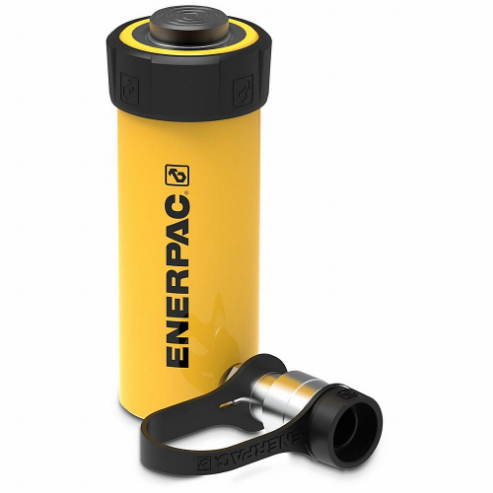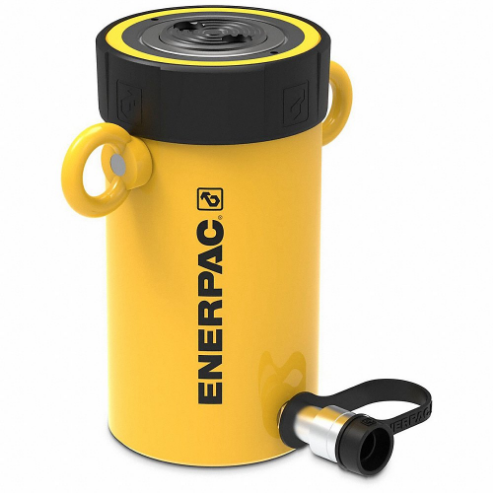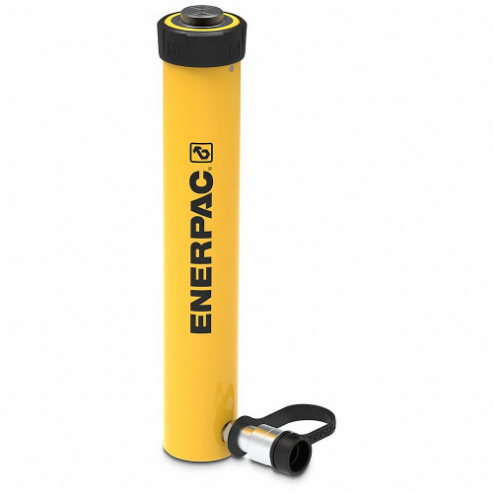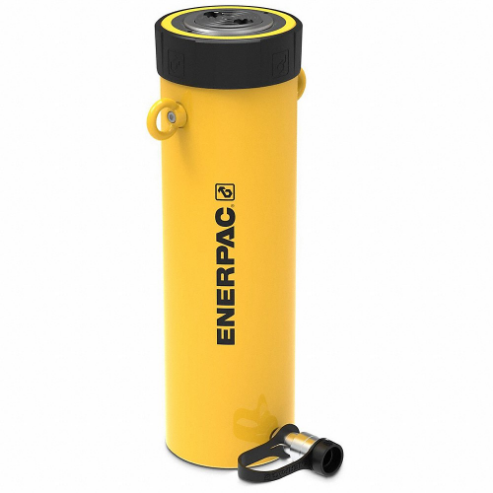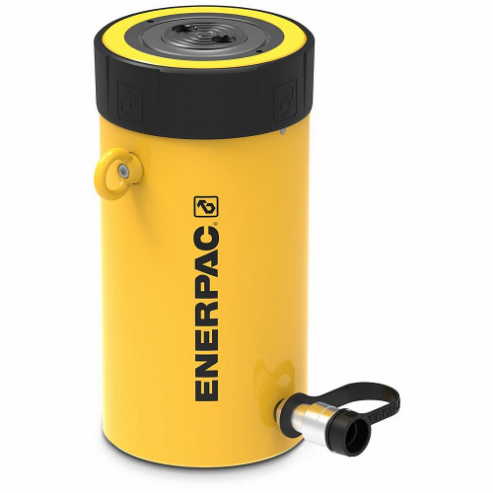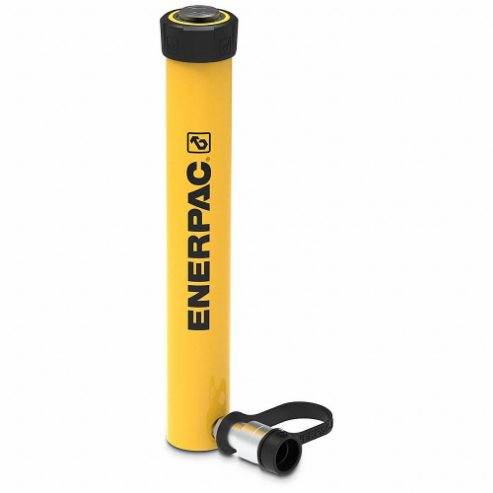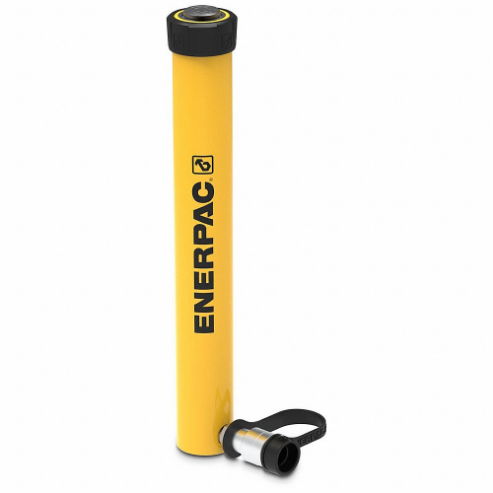Enerpac RC154 general-purpose hydraulic cylinder is ideal for pushing, lifting, pulling, bending and holding heavy machinery and equipment during maintenance or repair operations.
Working Mechanism:
- It is essential to ensure that the cylinder is connected to the hydraulic pump using suitable fittings and hoses.
- Verify that the hydraulic pump has an adequate level of hydraulic fluid and is in proper working condition.
- Securely and stably attach the cylinder to the load or object that requires lifting or movement.
- Activate the hydraulic pump to generate pressure, enabling the cylinder to extend and carry out the intended task.
- Keep a close eye on the operation and make any necessary adjustments to the pressure for precise control.
- Once the desired action is achieved, release the pressure from the hydraulic pump.
- With caution, disconnect the cylinder from the load and store it in a clean and dry environment.
Compatible Accessories:
- Enerpac CATS12 Tilt Saddle: This saddle provides adjustable tilting capabilities for precise support and positioning in various pushing and lifting applications.
- Enerpac REP10 Clevis Eye Plunger: It facilitates the connection between the hydraulic cylinder and the load or equipment being operated. It features a clevis eye on one end, which serves as a reliable attachment point for connecting the cylinder to a range of load attachments or lifting devices. This design ensures a secure and stable connection between the cylinder and the desired load, enabling effective operation within the hydraulic system.
Frequently Asked Questions:
Q. What accessories does this Enerpac RC154 general-purpose hydraulic cylinder come with?
A. It comes included with a dust cap, CR400 coupler and collar thread protector.
Q. What is the operating pressure of this hydraulic cylinder?
A. It has a maximum operating pressure of 10000 psi.
Q. How to maintain a hydraulic cylinder?
A.
To ensure optimal performance and extend its lifespan, adhere to the following maintenance steps:- Regularly cleanse the cylinder to eliminate dirt, debris, or any substances that could hinder its functionality.
- Perform inspections to detect any indications of leakage, damage, or unusual wear on the plunger, seals, or other cylinder components.
- Apply lubrication to the moving parts of the cylinder in accordance with the manufacturer's guidelines.
- Thoroughly examine the connections and fittings to confirm that they are appropriately tightened and devoid of any damage or excessive wear.
 Change Country
Change Country
